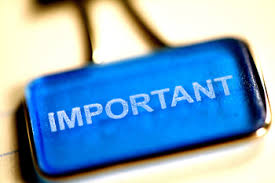
Remember how much you would have rather read a book with lots of pictures versus one with only text when you were a kid? The same applies, even now.
A picture speaks a thousand words, and when it comes to your content, that cannot be truer if your image is relevant. Images add richness to your content, and make readers more willing to read a long article. And they have great SEO value too!
Best Images for Content
The following are the types of images you can use to add an extra bit of pizazz to any blog post, article, or other piece of online content.
Eye Catching Photography
That photo grabbed your attention, right? I can’t tell you how many times I’ve been lured into reading a post simply because it had an eye-catching photo attached to it. The key is to find something that either relates to your content or proves your point. In this case, my point was to catch your eye. Some examples include:
- An article on how to calm the mind including photos of peaceful gardens or open meadows.
- An article on how to build a treehouse including photos of awesome treehouse designs.
- An article on the perfect cupcake recipe including photos of the ingredients and the finished product.
Relevant photos can help the audience really feel the point you are trying to make with your content as well as breaking up the text making the story seem like less of a daunting read.
People Photos
Have you ever noticed that you tend to trust a Twitter user or Facebook friend more if they have a photo of themselves as opposed to a cartoon, logo, or other non-personal bio image?
The same goes with content. Readers love to see the face behind whatever topic is being covered in a piece of content. This includes:
- Author bio photos for blog posts and articles.
- Photos of a person who authored a book or an eBook that you are reviewing.
- Photos of people included in a list, such as the top designer bloggers on Twitter.
Including people photos will increase the reader’s engagement and trust with your content as it lets them know that there is a real person on the other side of the screen creating the content.
Screenshots
Screenshots, in my opinion, are essential when it comes to two particular types of content – how to articles and lists.
How-To Screenshots
You can write the greatest tutorial on how to use a piece of software, but if it doesn’t include screenshots, it will make the reader still feel that the software may be to complicated for them to understand. For example, I could say that, when editing photos in Gimp, you should scale the image to the appropriate size to fit the article, such as I did with the above photo in this post to make it 570px wide. Or I could say that and then include the following:
Including the screenshot directs readers to the right menu option to correspond with my instructions, helping readers get to know the software before they get to it and give them a reference point if they get stuck.


